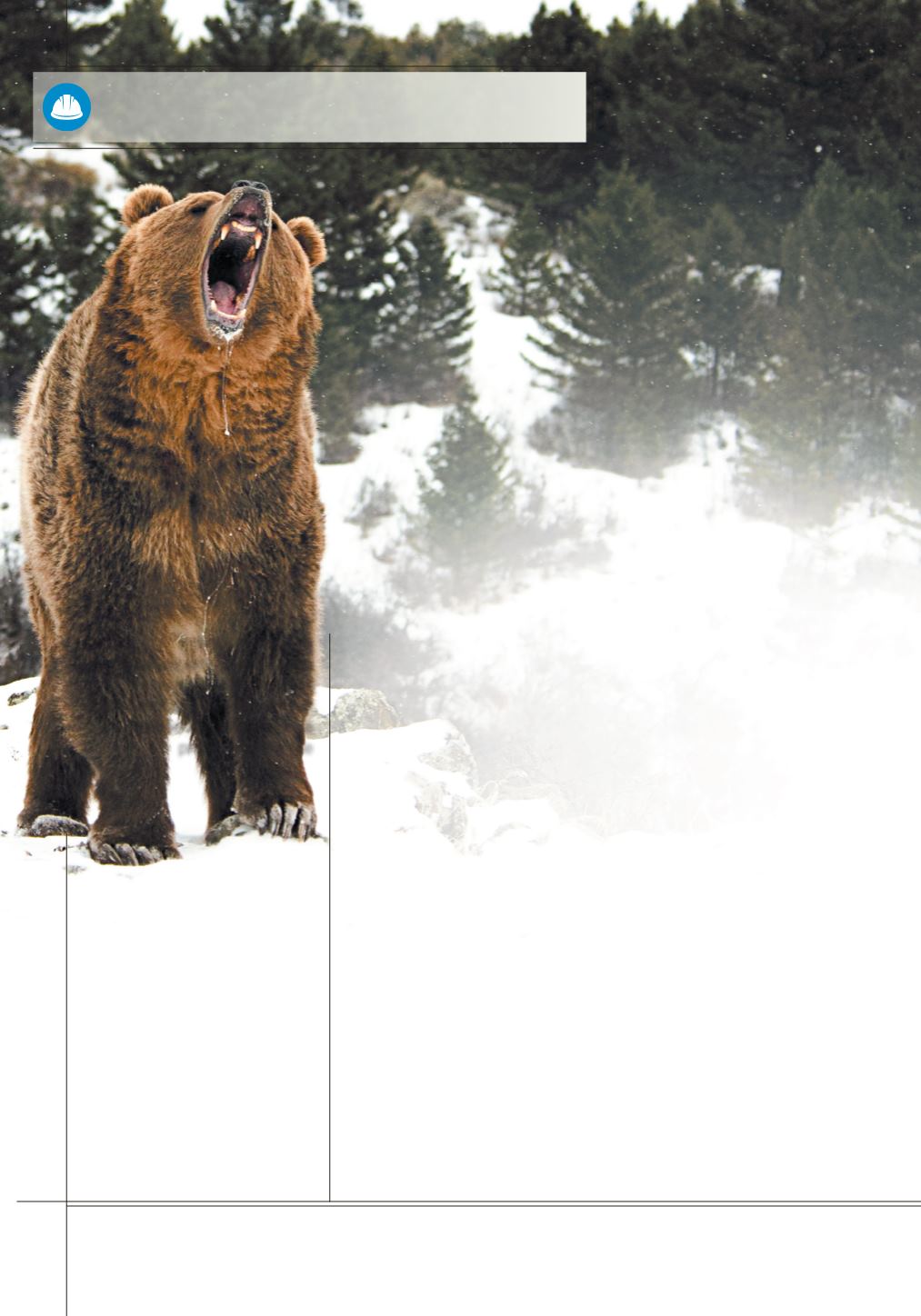

I N N O V AT I O N S • V O L . V I I , N O. 1 • 2 0 1 5
8
S A F E T Y M AT T E R S
Whether due to
human error, unforeseen
circumstance, or aging
equipment, the best deterrent
to potential disaster is a
proactive defense
The animal kingdom has long served as a rich well that’s
routinely tapped to depict the dangers – overt and covert – for issues
of pipeline safety. Let’s take bears, for example. We’ll let “hibernating
bears” symbolize incidents that arise after years of corrosion, harsh
conditions, and other natural or man-made forces take their toll on
legacy pipeline and equipment. “Circus bears” can be an analogy for
occupational safety, and “backyard bears” will be our metaphorical
stand-ins for process safety.
Keeping the “Three Bears” at Bay:
Prevention and Solutions
Each “bear scenario” presents its own unique set of challenges, but
while they may differ in frequency and severity, they have one thing
in common: No matter how tame you think a bear may be, it’s
still a wild animal, and wild animals must always be considered
potentially dangerous.
Identifying the “three bears” of pipeline safety is only the
beginning. According to Barry Hollis – T.D. Williamson’s Global HSE
Manager – HSE isn’t about dealing with the bears after they’ve shown
up. It’s about being prepared to take them on if and when they do.
“Safety is not the absence of incidents,” he says, “but rather the strength
of your defenses.”
So let’s take a closer look at three scenarios for potential calamity,
and some possible solutions to keep the bears at bay.
HSE
THREE BEARS
and the



















